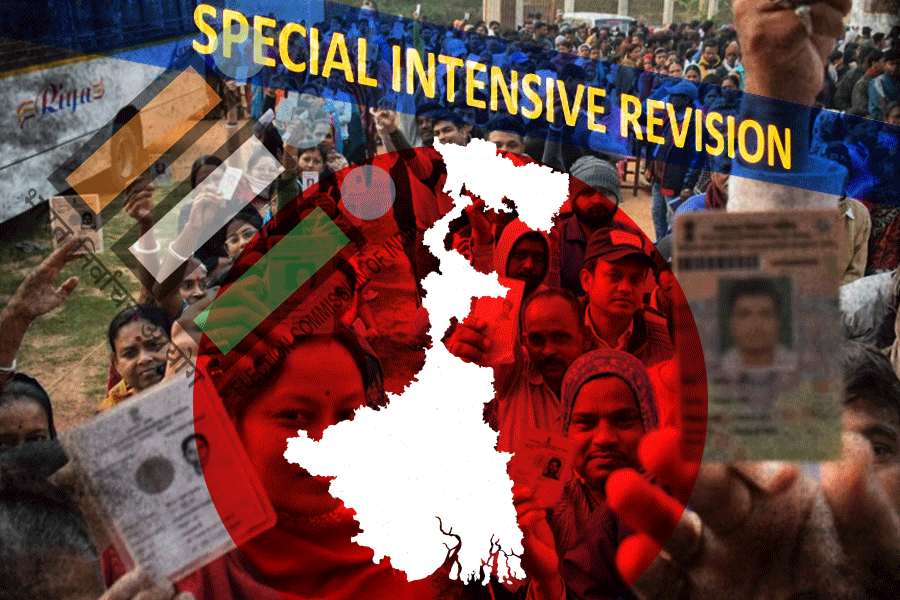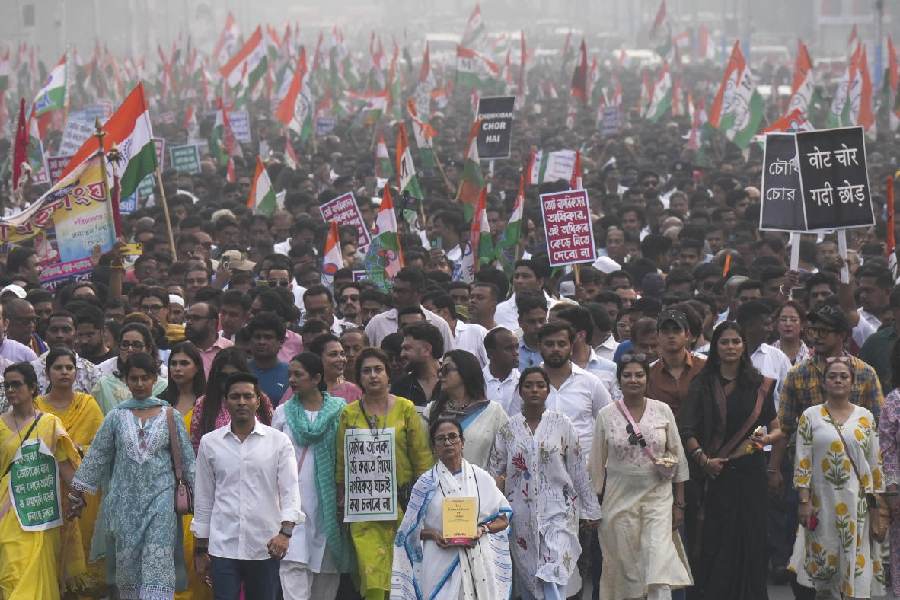 |
| Seven out of 10 golfers who play at Eagleton are foreigners |
Like always, Frenchman Ashley Roffey skipped the mandatory-for-tourists boat ride on Ooty Lake and photo session of the Dodabetta Peak when he was in the hill town last weekend. “Who has the time for all this?” asks the Bangalore-based senior executive at Turbo Meca, a turbine engine manufacturing firm.
Roffey has a one-point agenda in Ootacamund: to get up at the crack of dawn and hit the golf course. “It’s a pleasure to play golf at the Ooty course. The ups and downs of the terrain add a zing to the game,” says the avid golfer, back in Bangalore after a two-day golf holiday.
The last thing Roffey had expected to find in India ? when he relocated to Bangalore four years ago ? were golf courses. “It came as a big surprise to me,” he says. What’s more, moderate weather and the easy availability of caddies make India a dream golf destination. Roffey now plays more golf than ever before. “At times, I even grab a game before getting into work,” he says. He’s also spreading the good word back home. “I’ve invited several friends to India for golf holidays.”
Though the country is nowhere on the global tourists’ golf map yet, like Roffey, enthusiasts from across the world are slowly learning of India’s golf potential. “International golf tourists have begun to discover India as an economical, all-season golf destination,” says Chetan M., director, Eagleton Golf Resort, located 30 km from Bangalore. Chetan holds that seven out of 10 golfers who play at Eagleton are foreigners.
The Resort is clearly targeted at the globally-travelled golfer. Its lush, 160-acre golf course is landscaped with artificial lakes and sloping hillocks. The resort has an in-house multi-level swimming pool, tennis court, pool table and sauna section.
Though the numbers are still small, golf tourists are beginning to trickle into India. Vinay Marwah, managing director of Delhi-based Uday Tours, a member of the International Association of Golf Tour Operators, estimates that 1,500 to 2,000 golf tourists ? mostly from Japan and Korea ? visit India every year.
Compared to Malaysia ? which attracted 2,50,000 golf tourists last year ? India is small fry. But Marwah is upbeat. “With better marketing and more golf courses, we can expect a 20 per cent annual growth in the next five years,” he says.
Big money is a golf tourist’s biggest USP. “Golf tourists are a high-spending segment. They travel business class and stay at the best hotels. One golf tourist is equal to four back packers,” says V. Subramanium, CEO of the Delhi-based ETC Tours.
That’s probably why a flurry of activity is happening on the golf front. The World Cup of Golfing Cricketers, held in Bangalore last month, was a huge celebrity event. Cricketers-turned-golfers from eight Test cricket playing nations putted by day and partied by night. Everyone, from Kannada film stars and models to company executives, descended on the floodlit Karnataka Golf Association (KGA) course for some teeing off. For four days, golf lived in the limelight. “In one shot, eight countries learnt of India’s golf potential. This was one major motive of the tournament,” says Rohith Shetty, president, KGA.
Earlier this month, the Delhi Golf Club hosted a four-day ‘India Golf Festival’ with 150 teams. The rules were basic ? any amateur team from anywhere in the world could participate.
The tourism ministry is doing its bit to promote golf, too. In January 2006, it launches a marketing blitz which will sell India as a golf-cum-ayurveda destination. “This is part of the Incredible India programme,” says Amitabh Kant, joint secretary, department of tourism. “With world-class golf courses and improved air connectivity, India can be a lucrative golf destination,” he adds.
In the last five years, 10 international-standard courses have been built in India. The capital ? which made do with just the Delhi Golf Club for years ? now has options galore. There’s Japypee Greens in Noida, ITC Classic Golf Resort and the DLF Golf and Country Club ? all within striking distance of the city.
Bangalore is following closely. Five resort-like golf courses are coming up on the city’s outskirts. “The courses will be operational in the next three years,” says Shetty.
The Royal Calcutta Golf Club (RCGC) is upgrading its course to cater to tourist in-flow. It has also tied up with the ‘Organisation of Golfers’ ? an international golf tourism promoting body ? to draw more visitors. “We are relaxing our rules to make the course easily accessible to golf tourists,” says Manmohan Singh, CEO, RCGC.
Fair weather and low costs are India’s biggest advantage. “India is an all-season golf destination ? unlike Europe and the Middle East, where the weather plays spoilsport for half the year,” says Shetty.
To top it, a golf game in India costs a pittance. The green fee for a round of golf at Eagleton is Rs 1,000. “A round of golf in Korea costs up to Rs 10,000. Also, golfers have to wait for a month to get a booking,” Chetan says.
The easy availability of caddies can be another big draw. “Caddies come cheap in India. This is a big attraction for Western tourists,” says Chetan. In some parts of the world such as Scotland, only golfers above the age of 60 are entitled to caddies.
The information technology industry has brought in plane-loads of Western business travellers ? many of them avid golf players. “Very often, they are surprised to see golf courses in India,” says Shetty.
But as the green game gains ground in India, a section of environmentalists is seeing red. “Golf is an unsustainable and environment-damaging sport,” says Roland Martins, India representative of the Global Anti-Golf Movement (GAGM) and head of Jagrut Goenkaranchi Fauz (JGF), a Goa-based tourism activist group.
Martins points out that an 18-hole golf course consumes 5,000 cubic metres of water a day, enough for 2,000 families. An average golf course applies seven times more pesticides per acre a year than in agriculture. “Mangroves and farmland are being bulldozed to build golf courses. This is burdening the local community,” he says.
The JGF is not about to let that happen. Last month, a hotel group moved a proposal to acquire two lakh square metres of land to build an international standard golf course in Varca, Goa. The JGF is trying to stop that. “We are educating the local people and Panchayats on how golf courses harm the environment,” says Martins.
But for golf enthusiasts, these are minor issues that have to be dealt with as and when problems arise. For the time being, life is a putter’s delight.










